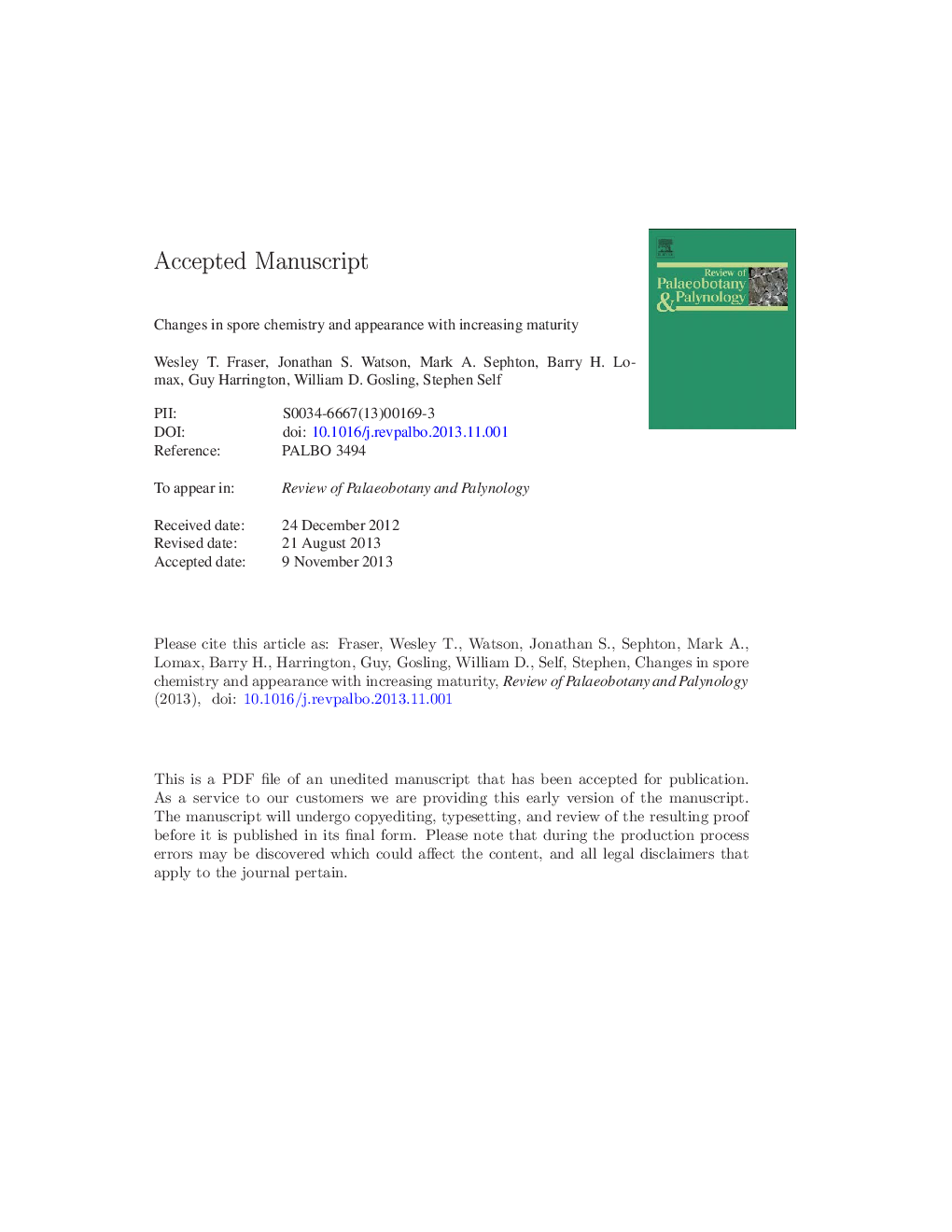| Article ID | Journal | Published Year | Pages | File Type |
|---|---|---|---|---|
| 6448737 | Review of Palaeobotany and Palynology | 2014 | 28 Pages |
Abstract
Sporopollenin is the primary biopolymer found in the walls of pollen and spores; during maturation sporopollenin undergoes a number of discrete chemical changes, despite maintaining identifiable morphological features which can be exploited for palynological study. Here we report the results of heating experiments performed using Lycopodium clavatum spores designed to investigate the changes that occur within sporopollenin across a wide range of temperatures (0-350 °C) to simulate different degrees of maturation. Changes in sporopollenin functionality were assessed using Fourier transform infrared (FTIR) microspectroscopy. Our analyses show that the chemical structure of sporopollenin remains relatively stable over a wide range of simulated maturation conditions, until a threshold of 250-300 °C is reached, at which point a reorganisation of chemical structure begins. Comparison of these artificially matured spores with fossil material obtained from a Carboniferous-age section in the United Kingdom shows a strong chemical resemblance, suggesting that our experimental procedure accurately reflects the process of maturation and provides an insight into the chemical stability of sporopollenin in the geosphere.
Related Topics
Physical Sciences and Engineering
Earth and Planetary Sciences
Palaeontology
Authors
Wesley T. Fraser, Jonathan S. Watson, Mark A. Sephton, Barry H. Lomax, Guy Harrington, William D. Gosling, Stephen Self,
